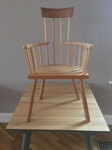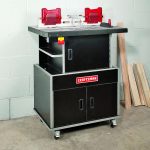We may receive a commission when you use our affiliate links. However, this does not impact our recommendations.
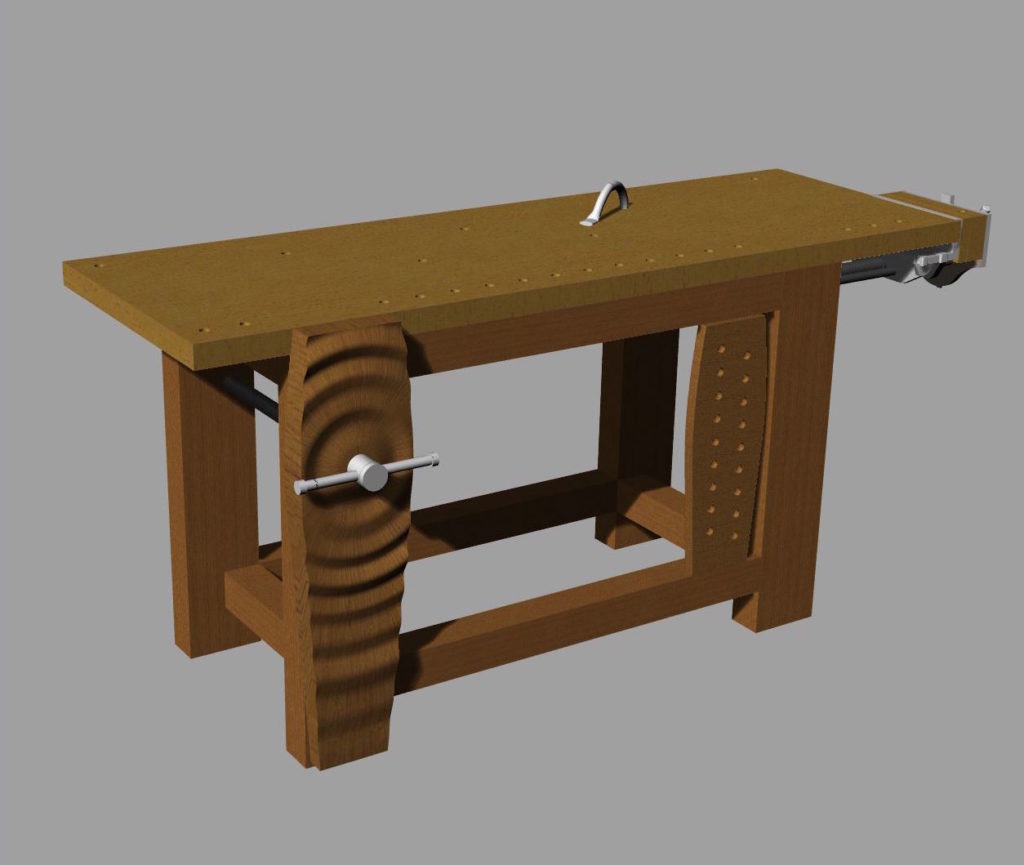
The BARN Workbench is a based on a modern Roubo design. Built on a budget, it features a simple base made out of 4″ x 4″ material and a pre-made Maple top.
The BARN Workbench is named for a community group of woodworkers and other artisans. BARN is the Bainbridge Artisan Resource Network located on Bainbridge Island. The island is directly across and a 35 minute ferry ride away from Seattle. Started by a group of enthusiastic woodworkers, the group has grown to include artisans with a number of interests, including fabric artists, metal workers, jewelers, writers, printers and more. After years of organizing and fundraising, they’re opening an incredible facility so that all the groups can share knowledge, tools and a great space to work in.
The woodworkers at BARN have built an incredible workshop with a little help from local professionals including Bob Spangler, Hugh Montgomery and myself to guide them through various tasks. Being the workbench junkie that I am, I took on the project of designing a workbench for the woodworkers’ bench room. The result is the BARN Workbench.
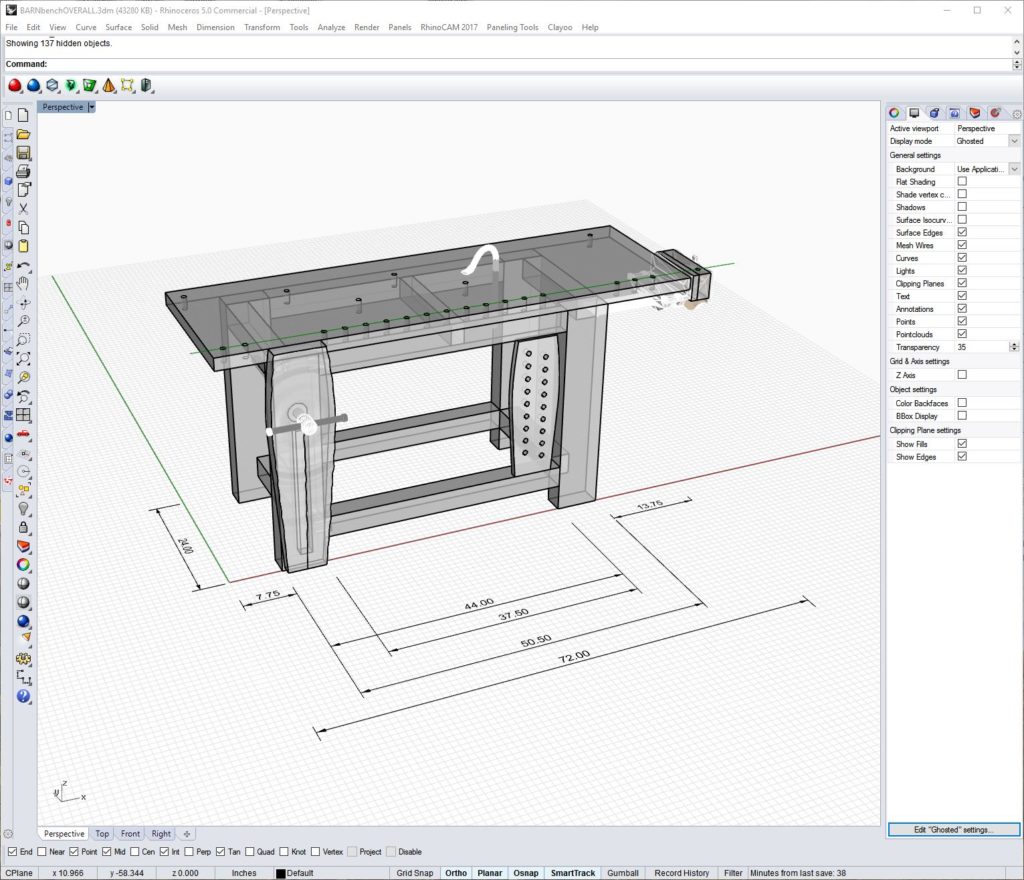
The BARN Bench was designed in Rhino3D CAD software. As you can see from the drawing, construction is simple and straight forward.
Every workbench project comes with a number of requirements or limitations. The BARN bench is no different. The bench is designed for hand tool woodworkers who might occasionally need to use a power tool like a Domino. It also had to be made at a moderate cost, assembled quickly with help from woodworkers with various levels of experience. And, there’s nine of them to make.
As the benches are being built, I’ll get into more details, but for now here are the basics of the design.
To benefit working with hand tools, I put an emphasis on quality hardware that serious woodworkers can appreciate. Each bench is equipped with a Benchcrafted Classic Leg Vise with a Criss Cross mechanism. The tail vise is a simple, well made 7” metal quick release model from Yost.
Rather than gluing up nine bench tops, the BARN bench uses a pre-made 25” x 72” x 1-7/8” thick maple top from Perfect Plank. The base is squared and milled 4×4 fir from your neighborhood home center with the legs doubled in width. Chris Schwarz took this approach with his excellent 2-day workbench plan. If you’re spoiled by building out of hardwood, you’ll find that working with flash kiln dried soft wood is tricky but doable if you take your time. Lots of expansion and cracking if you’re not careful. The good news is the results are plenty strong and inexpensive.
At this point, a question on a number of regular readers’ minds is where’s the digital woodworking in this bench? Was a CNC used? The answer to both questions, of course, is yes. Mounting a Benchcrafted vise requires a fair amount of work to create a large hole and a deep mortised pocket in the front left leg and vise chop. Certainly, this can be done by hand or other power tools. But, with nine benches to build, a CNC makes the process simple, accurate and fast. Same for cutting and chamfering the very accurately placed dog holes in the top. For some of the special features of the top that I’ll get into detail later on, accurate dog hole placement is particularly critical. Definitely, you can build this bench with other tools, but on this project with so many to build, the CNC saves time and delivers accuracy.
As Steve Jobs used to say, “…there’s one more thing”. The vise chops. Being a designer, I thought it would be fun to make each workbench special. And so, using Rhino3D I created a unique 3D design for each vise chop. I programmed 3D milling routines in RhinoCAM and machined them on my CNCs. For wood, I used hard maple, local western maple, and eastern walnut.
Woodworking is supposed to be fun, so why not make the vise chops interesting to see and touch? Here’s a sneak peek of the six of the ten vise chops (9 + 1 spare) waiting for completion.
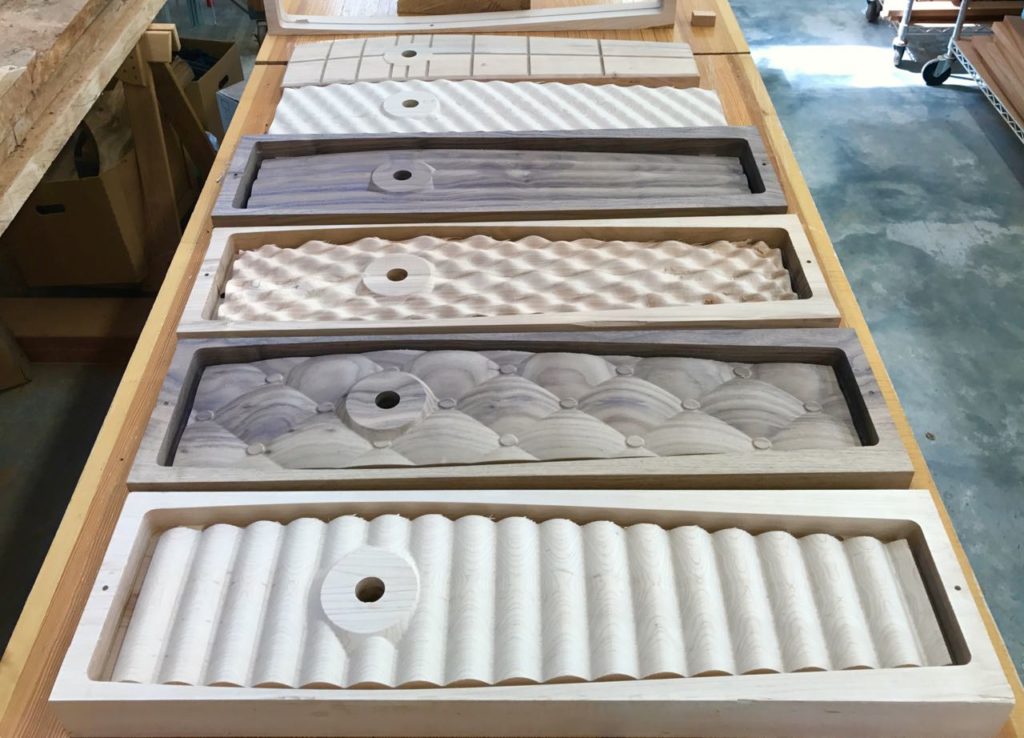
Vises, vises and more vises. Each BARN bench has a vise chop made on a CNC using 3D milling techniques. Carving a vise chop is hardly a necessary feature but it gives each bench a unique quality.
On the next BARN Workbench Post, I’ll take you on a video tour of the prototype bench and go into some of the bench features.
To see all the posts on the BARN workbench click here.
Here are some supplies and tools we find essential in our everyday work around the shop. We may receive a commission from sales referred by our links; however, we have carefully selected these products for their usefulness and quality.







